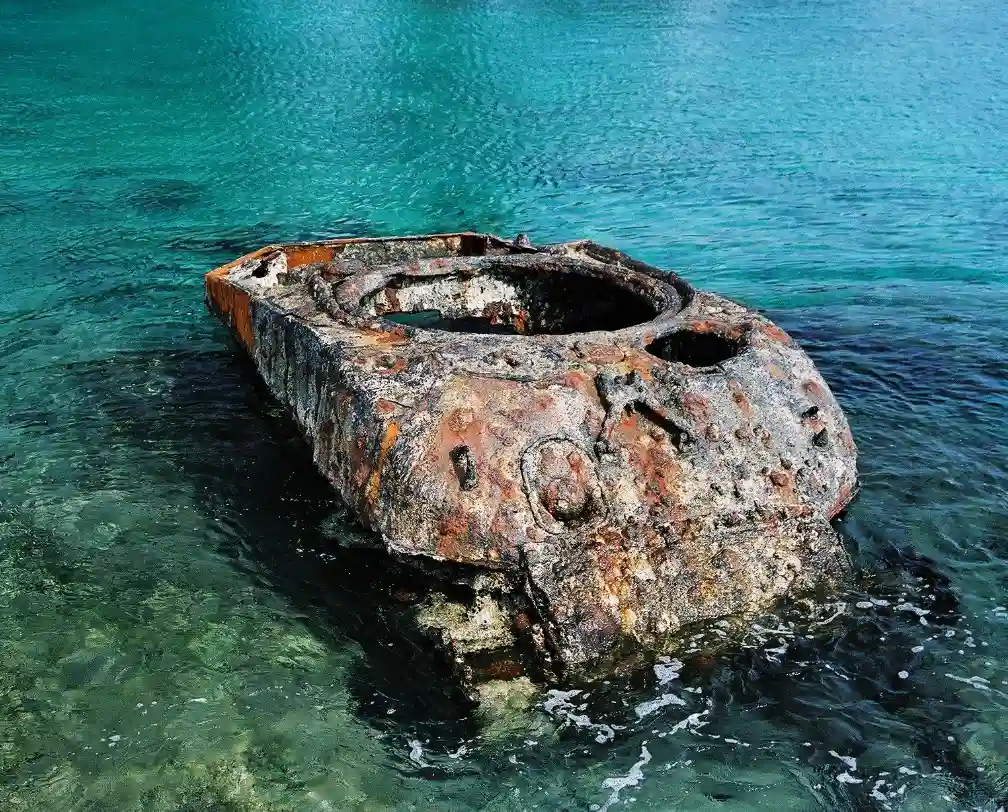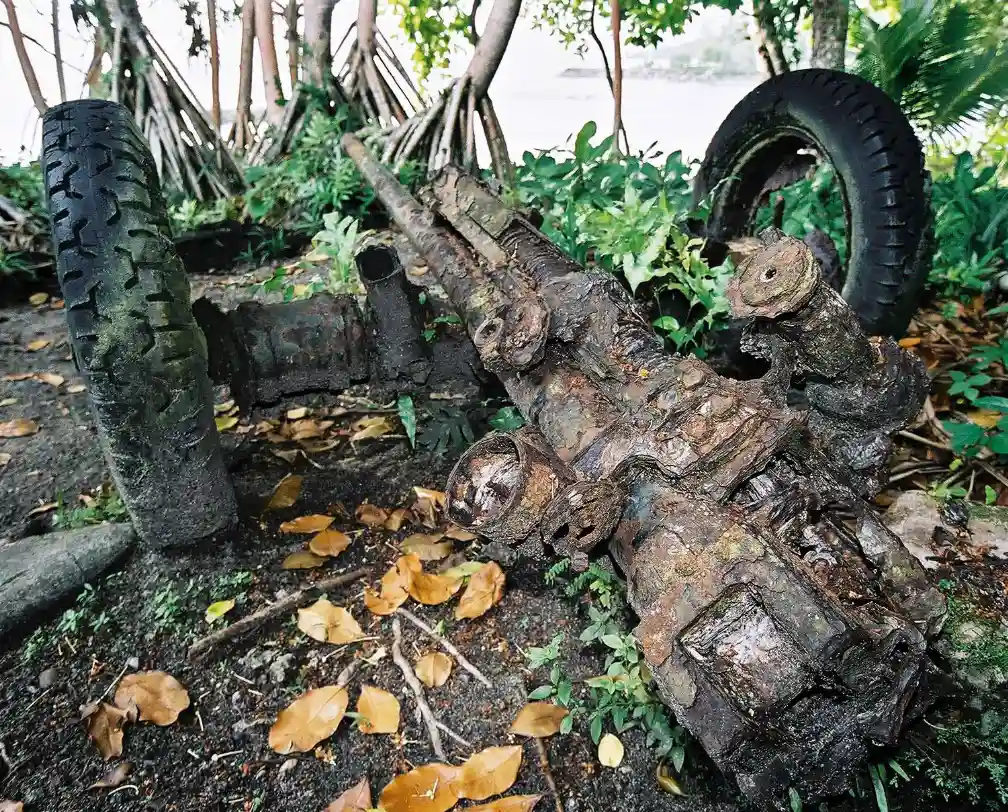In the annals of World War II, the Pacific Theater remains one of the most brutal and tragic chapters of the conflict. Battles were fought across vast expanses of ocean and on countless islands, each with its own unique history and legacy. One of these islands, Peleliu Island, was the site of one of the bloodiest battles of the Pacific War. In this article, we will delve into the history of Peleliu Island and the Battle of Peleliu, exploring the tactics used by both sides and the impact the battle had on the island and its people. We will also examine the legacy of the battle and its significance in the larger context of World War II. Join us as we dive into the history of Peleliu Island and explore the horrors and sacrifices of the Pacific War.
Background - The Pacific War
The Pacific War, also known as the Asia-Pacific War, was a military conflict that took place between 1941 and 1945, primarily between the Allies and Japan. It was the largest and deadliest war in history, involving more than 100 million people from over 30 countries. The war began with Japan's surprise attack on Pearl Harbor in December 1941 and ended with the atomic bombings of Hiroshima and Nagasaki in August 1945. The Pacific War was fought across vast expanses of the Pacific Ocean, from China and Burma in the west to the Aleutian Islands and Alaska in the north and New Guinea and the Solomon Islands in the south.

Peleliu Island and the Battle of Peleliu
Peleliu Island is a small island located in the western Pacific Ocean, part of the island nation of Palau. During World War II, Peleliu Island was occupied by the Japanese and was considered a key strategic location due to its location between the Philippines and the Marianas Islands. The island's airfield was also a major target for the American forces, as it could be used to launch bombing raids on Japanese-held territories.
The Battle of Peleliu, also known as Operation Stalemate II, was a major battle fought between the United States and Japan from September to November 1944. It was one of the bloodiest battles of the Pacific War, and the first major amphibious assault launched by the United States against heavily fortified Japanese positions. The objective of the battle was to capture Peleliu Island and secure the airfield, which was believed to be critical for future operations in the region.

The Invasion of Peleliu Island
The invasion of Peleliu Island began on September 15, 1944, with a massive naval force landing US Marines onto the beaches of Peleliu Island. The U.S. Navy had been preparing for the assault for months and had conducted ten days of aerial strikes followed by two days of naval bombardments before the landing. The U.S. Marines conducting the assault were divided into three groups, with the mission of the 5th group to press across and capture the airfield, and the other two groups to protect the flanks.
The Japanese forces on Peleliu Island were well-prepared for the invasion, with over 11,000 troops stationed on the island and a complex system of bunkers, tunnels, and caves to protect them. The first two days of the battle saw intense fighting, with the landing troops coming under heavy fire from artillery and anti-boat defenses. The Japanese troops were able to use their bunker system to relocate at will, and they had also placed guns and artillery within coral outcrops at the end of the beach, bringing direct fire on the landing troops.

Bloody Nose Ridge
One of the most challenging obstacles for the American forces was the Umurbrogol Mountain, also known as "Bloody Nose Ridge." The ridge had been heavily fortified by the Japanese, and the attacks on the island before the landing action had destroyed almost all the vegetation on the ridge, leaving advancing troops with no cover. The ridge was also a coral ridge, making it nearly impossible to dig in, so digging a foxhole was out of the question. The fighting on the ridge was intense and lasted for several weeks, with the American forces suffering heavy casualties.
The Outcome of the Battle of Peleliu
The battle for Peleliu Island was one of the bloodiest battles of the Pacific War, with both sides suffering heavy casualties. The American forces sustained about 35% casualties, while almost all of the 11,000 Japanese troops stationed on the island were killed or committed suicide rather than surrender. The battle was officially declared over on November 27, 1944, but fighting continued on the island for several months afterward.

The legacy of the Battle of Peleliu
The Battle of Peleliu was a significant event in the Pacific War, and it had a lasting impact on the island and its people. The island was left in ruins, and many of its inhabitants were killed or displaced. The battle also had a significant impact on the American forces, who suffered heavy casualties and were forced to rethink their tactics for future battles in the Pacific.
Today, Peleliu Island is a popular tourist destination, with many visitors coming to see the remnants of the battle and learn about its history. The island is home to a museum that tells the story of the battle, and there are many artifacts and remains of the fighting still visible on the island.
Conclusion
The Battle of Peleliu was one of the bloodiest battles of the Pacific War, and it had a lasting impact on the island and its people. The battle was fought between heavily fortified Japanese positions and American forces, who suffered heavy casualties in the fighting. Despite the high cost in human lives, the battle was ultimately successful in securing the island for the Allied forces. Today, Peleliu Island stands as a reminder of the atrocities of war and the sacrifices made by those who fought in it. It is a place where visitors can learn about the history of the Pacific War and pay tribute to those who lost their lives in the battle.

